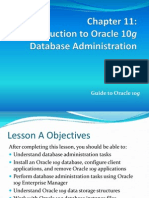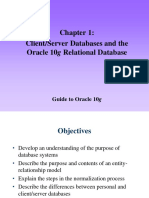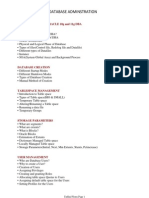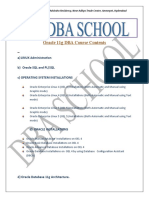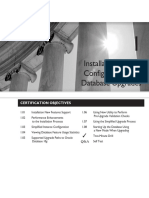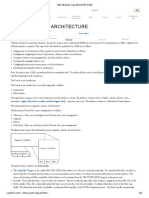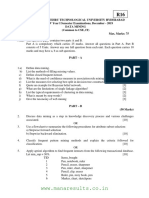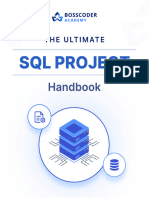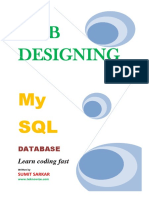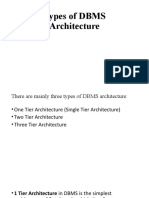0% found this document useful (0 votes)
25 views30 pagesLecture 5
The document provides an overview of database administration, focusing on the roles and responsibilities of a Database Administrator (DBA) using Oracle 11g. It covers key tasks such as managing database objects, performance, security, and user accounts, as well as the architecture of Oracle 11g data storage structures including tablespaces, data files, and control files. Additionally, it discusses the processes for starting and shutting down a database instance and managing user accounts and privileges.
Uploaded by
khawla2076Copyright
© © All Rights Reserved
We take content rights seriously. If you suspect this is your content, claim it here.
Available Formats
Download as PDF, TXT or read online on Scribd
0% found this document useful (0 votes)
25 views30 pagesLecture 5
The document provides an overview of database administration, focusing on the roles and responsibilities of a Database Administrator (DBA) using Oracle 11g. It covers key tasks such as managing database objects, performance, security, and user accounts, as well as the architecture of Oracle 11g data storage structures including tablespaces, data files, and control files. Additionally, it discusses the processes for starting and shutting down a database instance and managing user accounts and privileges.
Uploaded by
khawla2076Copyright
© © All Rights Reserved
We take content rights seriously. If you suspect this is your content, claim it here.
Available Formats
Download as PDF, TXT or read online on Scribd
/ 30

